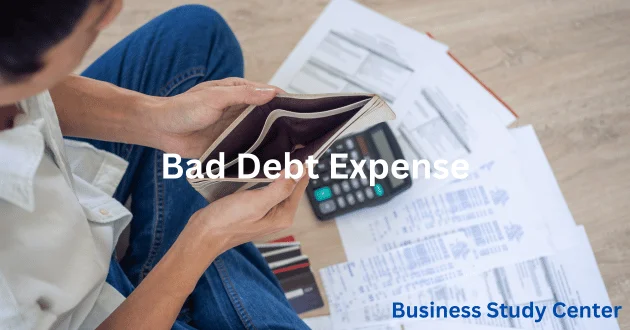
Introduction
In the world of business, cash flow is king. Maintaining a healthy cash flow is crucial for the success and survival of any company. However, one of the biggest obstacles to maintaining strong cash flow is bad debt. Bad debt refers to the amount of money that a borrower fails to repay, resulting in a loss for the creditor. When businesses extend credit to their customers, there is always a risk of bad debt expense. In this comprehensive guide, we will delve into the concept of bad debt expense, explore different methods of calculating it, and discuss strategies to protect your business from its negative impacts.
What is Bad Debt Expense?
Bad debt expense is the amount of money that a business records as an expense when it becomes evident that a customer will not be able to repay their outstanding debt. This can occur due to various reasons, such as financial difficulties or disputes over the product or service provided. Bad debt expense is an important aspect of financial reporting as it reflects the true financial position of a company by accounting for potential losses.
Calculating Bad Debt Expense for Accounts Receivable
There are different methods businesses can use to calculate bad debt expense for their accounts receivable. Two common methods are the direct write-off method and the allowance method.
Direct Write-Off Method
The direct write-off method involves recording bad debt expense when a specific customer’s account is deemed uncollectible. Under this method, the uncollectible amount is directly charged against the corresponding receivable account. While this method provides a precise figure for bad debt expense, it does not adhere to the matching principle of accrual accounting, as the expense is recorded in a different period from the original sale.
Allowance Method
The allowance method is the preferred method for estimating bad debt expense. This method involves setting up a reserve account called the allowance for doubtful accounts. At the end of each fiscal year, businesses review their accounts receivable and estimate the portion that is unlikely to be collected. This estimated amount is then recorded as bad debt expense, reducing the accounts receivable on the company’s income statement.
Impacts of Bad Debts on Business
Bad debts can have significant impacts on a business, both financially and operationally. Large bad debts or multiple unpaid accounts can lead to substantial losses and increase the risk of bankruptcy. Additionally, bad debts complicate accounting processes and require valuable staff time and resources to collect on the unpaid debts. It is crucial for businesses to manage bad debt expense effectively to minimize its negative effects.
Protecting Against Bad Debt Expense
While it is impossible to completely eliminate bad debt expense, businesses can take steps to protect themselves from its impact. Here are some strategies to consider:
1. Tighten Credit Policies
Maintaining a strict credit policy can help minimize the risk of bad debt. Conduct thorough credit checks on potential customers, set credit limits based on their creditworthiness, and regularly review credit terms to ensure they align with the financial health of your customers.
2. Offer Early Payment Discounts
Encouraging customers to pay early by offering discounts can help improve cash flow and reduce the risk of bad debt. Providing incentives for prompt payment can motivate customers to settle their outstanding balances sooner.
3. Implement Late Payment Fees
To discourage late payments, consider implementing late payment fees for customers who consistently fail to pay on time. This can serve as a deterrent and encourage customers to prioritize timely payment.
4. Credit Insurance
Credit insurance is a valuable tool for protecting businesses against bad debt. It provides coverage for customer non-payment in various circumstances, such as insolvency or protracted default. By transferring the risk of bad debt to an insurance provider, businesses can safeguard their cash flow and mitigate the financial impact of non-payment.
5. Regularly Monitor Accounts Receivable
Stay vigilant by monitoring your accounts receivable regularly. Identify customers with outstanding balances and proactively follow up with them to ensure timely payment. Prompt action can help address potential bad debts before they become unmanageable.
6. Improve Collections Processes
Review and enhance your collections processes to maximize the chances of recovering outstanding debts. Implement effective communication strategies, establish clear payment terms, and utilize technology solutions to streamline the collections process.
7. Diversify Customer Base
Relying heavily on a few customers increases the risk of bad debt. Diversify your customer base to minimize the impact of potential defaults. By serving a broader range of customers, you can spread the risk and reduce your exposure to bad debt from a single source.
8. Regularly Review and Update Credit Policies
As your business evolves, it is essential to regularly review and update your credit policies. Keep track of industry trends, changes in customer behavior, and economic conditions that may impact creditworthiness. Adjust your credit policies accordingly to mitigate the risk of bad debt.
Conclusion
Bad debt expense is an unavoidable aspect of doing business, but by implementing proactive strategies, businesses can minimize its impact. Tightening credit policies, offering incentives for early payment, utilizing credit insurance, and regularly monitoring accounts receivable are just a few ways to protect your business. By effectively managing bad debt expense, businesses can maintain a healthy cash flow, reduce financial risk, and ensure long-term success.
Remember, bad debt expense is an ongoing concern for businesses, and it requires constant attention and adaptation to changing circumstances. By staying proactive and implementing sound credit management practices, businesses can navigate the challenges posed by bad debt and safeguard their financial stability.


